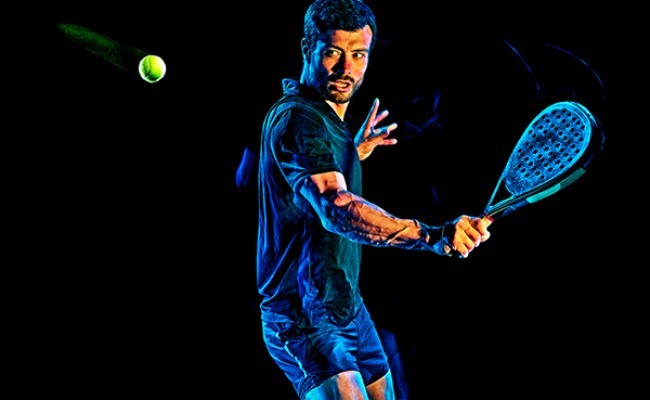
Sports injuries in padel
- 27/02/2023
How common are sports injuries in padel tennis?
Studies place the personal injury rate—the number of players injured per 100 players—between 50 and 90%.
According to the studies consulted, the injury rate ranges between 2.75 and 3 injuries per 1,000 hours of sports practice.
Every 1,000 matches, there will be approximately 9 injuries.
Other studies link increasing age and an increase in body mass index with an increase in injuries.
Padel tennis is currently the fastest-growing sport in the world, both in terms of the number of players and the number of courts built. Its rise over the last two decades has been exponential. As a result of this growth, there is an increase in sports injuries in padel tennis, both among recreational and professional athletes. Despite this significant growth, there are still not many studies that focus on the sports injuries this sport causes.
What is the anatomical location of padel tennis sports injuries?
According to the anatomical location of the injuries, most padel tennis injuries occur in the lower extremity (the same is true in studies of other racket sports such as tennis, squash, or badminton), undoubtedly due to the explosive nature of this sport, with accelerations, decelerations, changes in rhythm, and jumps with unstable landings.
Among the most common padel tennis injuries, the elbow is the most commonly injured joint, accounting for 20% of all injuries.
This is followed by the foot and knee, both accounting for close to 11%.
What are the most common diagnoses for padel tennis sports injuries?
If we're talking about a precise diagnosis, the common injuries are:
- Epicondylitis (the most common; see the article on epicondylitis and its treatment)
- Cervical contractures
- Plantar fasciitis (see the article on plantar fasciitis and its treatment)
- Lower back pain
- Ankle sprains
- Medial calf injuries
- Shoulder tendonitis
Which anatomical structures are most frequently injured when playing padel?
If we look at the most frequently injured structures, we find the tendon and muscle to be the most frequently injured, followed by the joints and ligaments. The most affected tendons are the common extensor tendon (epicondylitis) and the rotator cuff tendons in the shoulder.
Many of these injuries are attributable, especially in recreational players, to poor technique, inappropriate equipment, or a lack of preventive measures.
It is important to note that most studies agree that 1 in 4 athletes injured while playing padel tennis will suffer a relapse. Correcting the aforementioned factors and improving the technical nature of sports practices during training are essential for reducing injuries and their recurrences.
At what point in the game do padel tennis injuries occur?
Approximately 45% of padel tennis injuries occur in the final stages of matches or training sessions. Lack of physical and technical preparation, combined with overuse, are the most common causes of these injuries, and they usually occur in the upper extremities.
However, in the initial stages of sports practice, the lower extremities are the most likely to suffer injuries, likely due to a lack of warm-up prior to the activity.
Several studies have attempted to link the number of hours spent playing padel tennis per day and the increase in the number of injuries. While injury incidence studies in recreational tennis players have shown an increased number of injuries in those who practiced more than two hours a day, this relationship between the number of injuries and playing time has not been established in padel players.
Is the material used related to sports injuries in padel?
Regarding the material used, there are studies that link round-type rackets weighing more than 370 grams with an increase in upper limb injuries.
When analyzing the type of shoes, it was observed that most of the players in the studies used low-top shoes with herringbone soles, and that there is a significant relationship between lower limb injuries and the use of omni soles.
How serious are sports injuries in padel tennis?
Most injuries that occur in padel players are classified as minor, related to tendon and muscle injuries in the upper extremities. Studies show that 40% of padel tennis injuries do not require medical care or sick leave.
How can sports injuries be prevented in padel tennis?
As in all sports, preventative measures are essential to reducing the incidence of injuries. The use of appropriate equipment, proper maintenance of playing courts, good physical condition and overall muscle conditioning, combined with technical refinement of the sporting gesture and preparation before and after playing sessions are important factors that will undoubtedly help reduce the number of injuries in padel tennis.
Book an appointment with Dr. Jordi Jiménez. He will see you at the center of Palma de Mallorca and help you regain your quality of life.

![[VIDEO] Ultrasound-Guided Injection for Trigger Finger](https://drjordijimenez.com/imagen/100/100/Imagenes/infiltracion-ecoguidada-dedo-resorte-drjordijimenez.jpg)
![[VIDEO] Ultrasound-guided infiltration of the lumbar facets](https://drjordijimenez.com/imagen/100/100/imagenes-pagina/sindrome-facetario-lumbar-drjordijimenez (1).jpg)
![[VIDEO] Ultrasound-guided infiltration of the hip joint](https://drjordijimenez.com/imagen/100/100/Imagenes/valgo-dinamico-rodilla-drjordijimenez.jpg)